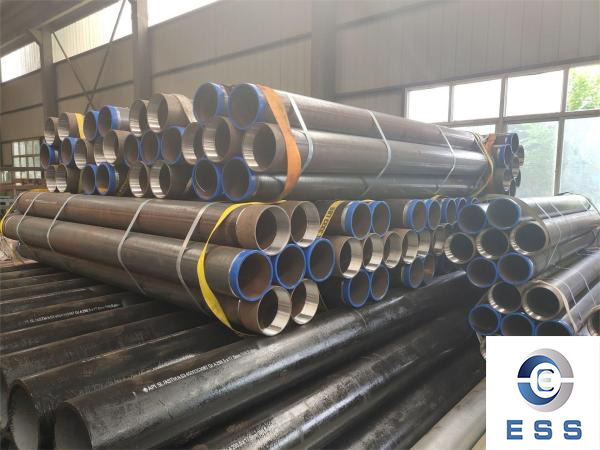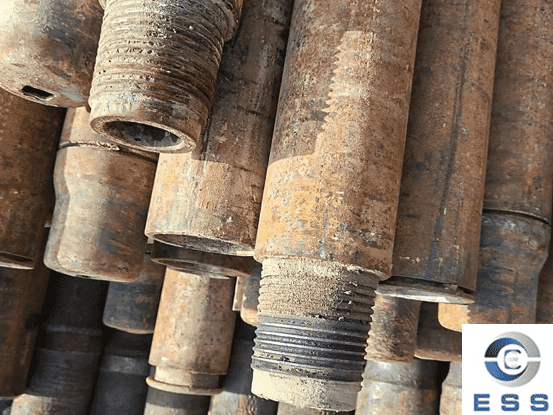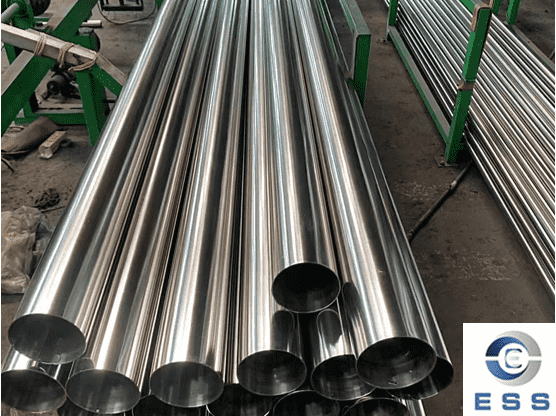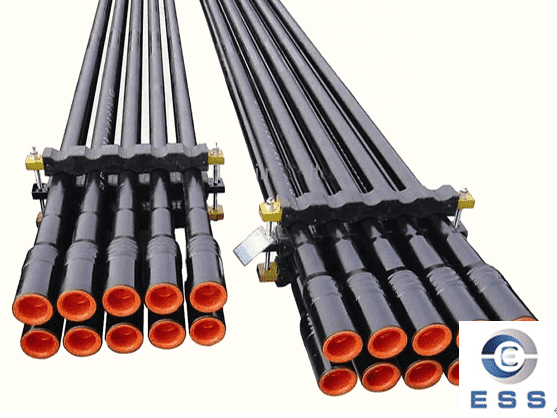What are The Functions of ERW Pipes in Different Industries?
I. Introduction
A. Definition of ERW (Electric Resistance Welded) steel pipes
ERW (Electric Resistance Welded) steel pipes are a type of welded pipe manufactured through the process of rolling and welding the steel strip longitudinally. Their seamless flow and joint strength, created through electric current heating, make them versatile and cost-effective for various applications.
B. Importance of ERW pipes in various industries
ERW pipes possess exceptional properties, such as strength, durability, and corrosion resistance, making them indispensable in numerous industries. Their ability to withstand high pressure and varying temperatures ensures their widespread usage.
C. Overview of the article's structure
This essay explores the extensive applications of ERW pipes across various industries. Each section highlights their specific functions, advantages, challenges, and potential for future developments.

II. Oil and Gas Industry
A. Transporting oil and gas
ERW pipes are vital for transporting oil and gas over long distances, ensuring safe and efficient distribution. They are used in oil and gas pipelines, helping to meet the growing energy demands of the world.
B. Applications in exploration and production
Their durability and corrosion resistance make them ideal for well casings and conductors in exploration and production processes. ERW pipes support the extraction of valuable resources from beneath the earth's surface.
C. Corrosion resistance and durability
ERW pipes have excellent corrosion resistance, crucial for maintaining pipeline integrity. They help reduce maintenance costs and extend the lifespan of oil and gas infrastructure.
D. Environmental and safety considerations
The use of ERW pipes enhances safety and reduces environmental risks by minimizing leaks and spills. This contributes to sustainable energy practices and protects ecosystems.
III. Construction Industry
A. Structural support and load-bearing applications
ERW pipes provide essential load-bearing capacity for building foundations and structural support in construction. They form the backbone of high-rise buildings and critical infrastructure.
B. Water and sewage systems
Their smooth internal surface makes them ideal for water and sewage systems, optimizing water flow. ERW pipes ensure efficient water distribution and reliable wastewater management.
C. HVAC systems and industrial piping
ERW pipes are suitable for HVAC systems and industrial piping due to their thermal conductivity and ease of installation. They play a crucial role in maintaining comfortable indoor environments.
D. Fire protection and sprinkler systems
Their fire resistance and durability are vital for fire protection and sprinkler systems. ERW pipes safeguard buildings and occupants, mitigating the impact of fires.
IV. Automotive Industry
A. Exhaust systems and mufflers
ERW pipes are used in exhaust systems and mufflers due to their resistance to high temperatures and exhaust gases. They ensure optimal engine performance and reduced emissions.
B. Chassis and frame manufacturing
In vehicle chassis and frame manufacturing, ERW pipes provide structural strength and safety. They contribute to the overall stability and crashworthiness of automobiles.
C. Fuel and hydraulic systems
ERW pipes ensure efficient fluid transportation in fuel and hydraulic systems. They are crucial for the reliable operation of vehicles' propulsion and braking systems.
D. Collision resistance and safety features
ERW pipes enhance collision resistance and safety features in vehicles. They protect passengers and reduce the severity of impacts during accidents.
V. Water and Wastewater Treatment
A. Water supply pipelines
ERW pipes form the backbone of water supply systems, ensuring clean and potable water distribution. They are essential for meeting the water needs of growing populations.
B. Sewerage systems
In wastewater treatment, ERW pipes carry and discharge effluents safely. Their corrosion resistance ensures efficient and eco-friendly sewage management.
C. Industrial water treatment applications
ERW pipes facilitate the transport of fluids in industrial water treatment. They enable industries to meet stringent environmental standards and recycle water for sustainable practices.
D. Advantages over other pipe materials
Compared to other materials, ERW pipes offer cost-effectiveness and longevity. Their recyclability further contributes to sustainable water management practices.
VI. Agriculture and Irrigation
A. Irrigation systems
ERW pipes are widely used in irrigation systems, efficiently distributing water to crops. They play a pivotal role in agricultural productivity and food security.
B. Water conveyance in agriculture
ERW pipes facilitate water conveyance, reducing water wastage and ensuring water reaches remote farmlands.
C. Farm equipment and machinery
ERW pipes provide structural support to farm equipment and machinery, enhancing their efficiency and reliability.
D. Longevity and cost-effectiveness in rural settings
The longevity and cost-effectiveness of ERW pipes make them a preferred choice for agriculture's long-term water management needs. They withstand harsh weather conditions, reducing maintenance costs for farmers.
VII. Mechanical and Engineering Applications
A. Machinery and equipment manufacturing
In machinery and equipment manufacturing, ERW pipes support the structural framework of various machines and appliances. They contribute to industrial productivity and economic growth.
B. Conveyor systems
ERW pipes are utilized as conveyor frames for efficient material movement in manufacturing and mining industries. They optimize production processes and logistics.
C. Structural applications in bridges and buildings
ERW pipes are essential in constructing bridges and buildings, ensuring their stability and safety. They enable the development of modern infrastructure for expanding urban populations.
D. Impact on mechanical engineering advancements
The continued development and innovation in ERW pipe manufacturing have greatly influenced the mechanical engineering industry. As new techniques and materials emerge, mechanical engineers can design and build more efficient and sustainable machines and structures.
VIII. Electrical Industry
A. Electrical conduits and cable protection
ERW pipes house electrical wires and cables for safety in the electrical industry. They are crucial for transmitting electricity safely and efficiently.
B. Underground power transmission
ERW pipes provide secure pathways for underground power transmission, minimizing visual disruption and ensuring reliable energy distribution.
C. Advantages over traditional wiring methods
ERW pipes offer improved safety and reduced maintenance in electrical systems, supporting the increasing electrification of societies.
D. Integration with renewable energy projects
ERW pipes support the integration of renewable energy projects by providing reliable electrical infrastructure. They play a vital role in advancing clean energy initiatives.
IX. Challenges and Limitations
A. Corrosion and degradation issues
Despite their corrosion resistance, ERW pipes may still be susceptible to corrosion in specific environments. Proper coatings and maintenance are necessary to mitigate these concerns.
B. Temperature and pressure limitations
Careful consideration is needed for extreme temperature and pressure conditions, as ERW pipes have specific operating limits.
C. Considerations for specific industry requirements
Selecting the appropriate pipe material is essential for specific applications, and engineers must consider industry-specific demands.
D. Ongoing research and development efforts
Continued research aims to enhance ERW pipes for future applications and address the challenges they face. Innovations in materials and manufacturing techniques are constantly improving their properties.
X. Conclusion
A. Recap of ERW pipes' versatility in various industries
ERW pipes are indispensable components in numerous industries, providing critical infrastructure and supporting economic growth.
B. Prospects for future applications and innovations
Advancements in ERW pipes' properties will likely lead to further applications and improvements in existing industries.
C. Encouraging sustainable practices in the use of ERW pipes
Responsible manufacturing, proper maintenance, and recycling will ensure a greener future and promote sustainable development. By embracing these practices, industries can reduce their environmental impact and support a more sustainable world. The continued innovation and adoption of ERW pipes will play a crucial role in addressing global challenges and fostering economic and environmental prosperity.













 Eastern Steel Manufacturing Co.,Ltd not only improve product production and sales services, but also provide additional value-added services. As long as you need, we can complete your specific needs together.
Eastern Steel Manufacturing Co.,Ltd not only improve product production and sales services, but also provide additional value-added services. As long as you need, we can complete your specific needs together.










